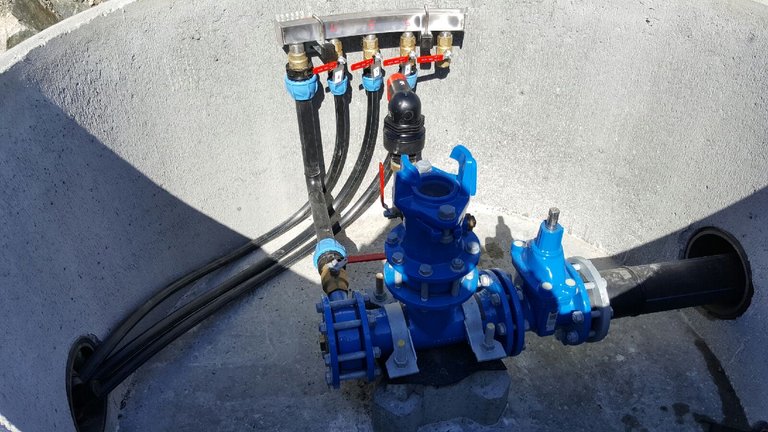I n Norway we have strict requirements for drinking water and we try to replace cast iron for PE plastic pipes where there is leakage or pipes are old and need replacement.
n Norway we have strict requirements for drinking water and we try to replace cast iron for PE plastic pipes where there is leakage or pipes are old and need replacement.
The advantage of PE plastic pipes is that they are welded together and you save big costs by joining them as this is costly in larger dimensions.
There are 2 ways to weld the pipes on one is by an el-fitting where there are heat wire inside the sleeve that is heated by a transformer and the pipes are melted together inside the sleeve.
Another way is to plan the pipes completely flat with the help of an eletric razor and then warm them up with a "mirror". This method is preferred on tubes from 110mm and upwards as the electric sleeves are quite expensive in larger dimensions.
The pipes are added from existing water supply and on to for example. New housing and industrial areas.
There are used trenches dug into the ground at different intervals so that a small part of the water system can be shut off in case of any leaks. Leakages on new plants are usually the case as there are strict procedures for pressure testing and often the welds must be data logged which means that it will be documented how long the welding cycle is heating and cooling time.
What's not that tough is when it's going to be connected to a 6-10 house in the kumme and everything just looks like it's clogged in place. This is what this plumber has taken and done something about.
Specially made distributors made using 60mmx60mmx3mm 316 stainless steel. They are rolled to fit the arc that is in the comb, and holes are drilled to wipe the nipples with threads so that every one that is connected to it has its own ball valve.

Way beyond my plumbing capabilities. :)
it`s nice to see when someon take pride in the work.